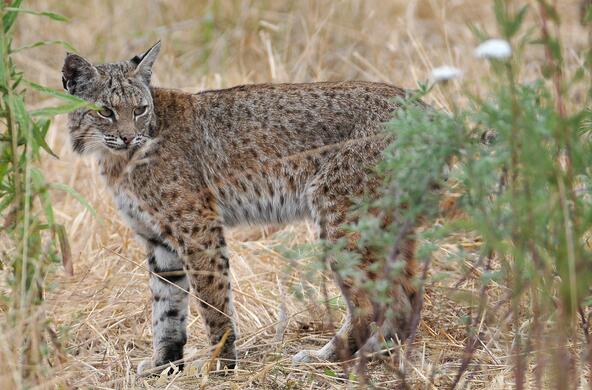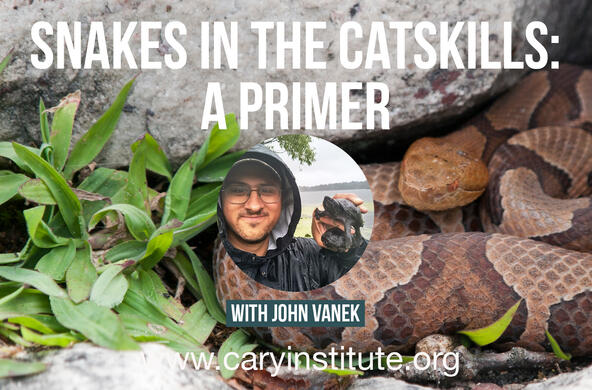Winter can feel cold and desolate as we watch the piles of snow get taller.
It's easy to let one's imagination run wild and hear the howl of wolves echoing in the winter night. Breeding wolves were killed off in New York back in the 1890s. But hearing nighttime howling today should not be blamed on our imaginations. Another predator, the eastern coyote (Canis latrans), abounds in our area and provides a similar hair-raising effect when we hear it calling.
Coyotes are but one of several predatory mammals that have made their presence known this winter at the Cary Institute. For example, footprints left by a female black bear with cubs indicated these animals had not yet denned for the winter by a pre-Thanksgiving snowfall. Tracks seen during January tell us red fox, bobcat, fisher, otter and raccoon all were spending time on the property. Coyote tracks far outnumber those left by other carnivores, suggesting they may be our most abundant large predator. In fact, trail cameras placed on the Cary Institute's grounds last fall as part of a deer population study recorded four times more coyotes than all other predators combined.
Coyotes are not native to the eastern U.S.; they arrived in New York around the 1920s from western or northern regions. Recent studies indicate today's New York coyotes include some wolf genes mixed in with their ancestral coyote DNA. Studies show no evidence of recent hybridization between today's New York coyotes and domestic dogs, so what you see or hear in the field is an eastern coyote and not a "coy dog," despite persistent speculation. As one of the top predators in our area, coyotes fill some of the ecosystem functions formerly provided by wolves. Questions remain about the extent that coyotes regulate the number of large animals, such as deer, and what impact they might be having on other prey species.
Another interesting area of research is the impact coyotes have on other predators. Studies in rural areas suggest that coyotes and foxes don't "play well together" and when coyotes move in, foxes move out or get eaten. Researchers at the Cary Institute have hypothesized that the displacement of fox populations by coyotes could contribute to increased Lyme disease risk. Coyotes eat a wider range of animals than foxes, from mice up to deer, whereas foxes focus more on small rodents. Foxes are known to surplus kill and cache these rodents and might locally control rodent populations. Animals such as mice and chipmunks act as reservoirs for Lyme disease. Fewer foxes could mean more mice and more ticks that feed on the mice, and transmit the disease to humans. This relationship among coyotes, foxes and the number of human Lyme disease cases continues to be debated and studied by scientists.
Scientists are also interested in coyote interactions with humans. Highly adaptable, coyotes have taken up residence in some urban centers such as Chicago, modifying their behavior to live in close proximity to humans. Urban coyotes tend to hide during the day and forage at night, under the cover of darkness. Attacks on people are rare. Never feeding coyotes has been proposed as a key step in preventing them from losing their fear of humans.
Coyotes likely play an important role in our local ecosystem, and the full extent of their role remains to be discovered. Winter provides a wonderful opportunity to see signs of their activity, which is often hidden at other times of the year. A good reference, such Mark Elbroch's "Mammal Tracks and Sign: A Guide to North American Species," can be a great aid in sorting out what you find.
Look closely for these adaptable animals — they are likely to be in your neighborhood.








